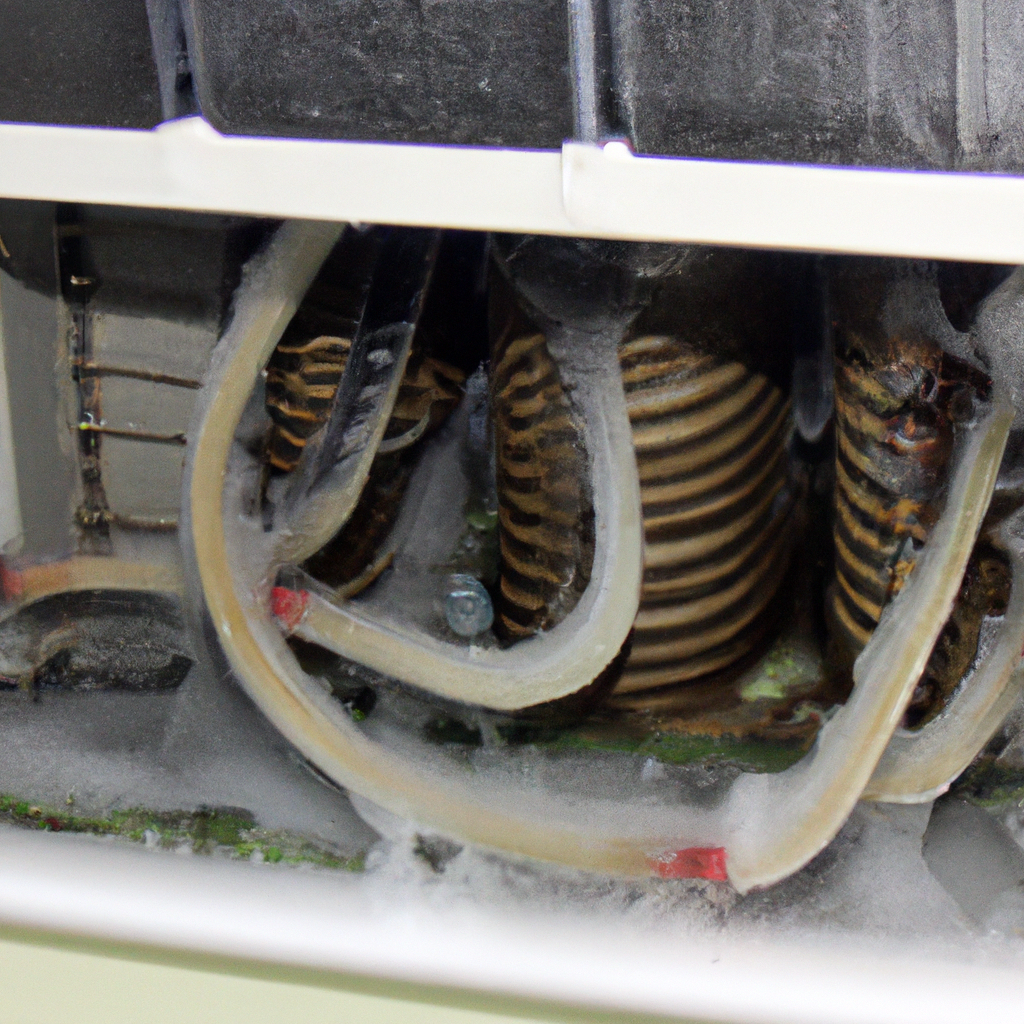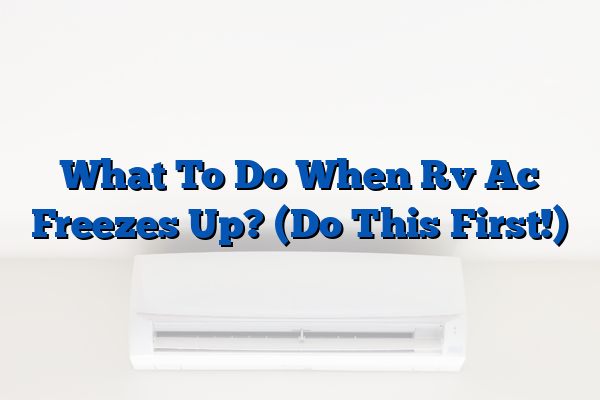Have you ever been on a road trip in your RV, only to find that your AC has frozen up? It’s no fun when it happens, but don’t worry – there are steps you can take to get it going again.
In this article, we’ll tell you what to do when your RV AC freezes up so you can get back on the road and enjoy your journey.
Here are some of the solutions we’ll discuss: checking the compressor fan, checking for blocked air vents, cleaning the condenser coils, and more. By following these tips, you’ll be able to fix any frozen issues with your RV AC and get back on track quickly.
So if you’re one of those unlucky campers who has experienced an unexpected freeze-up while out on a trip, read on – we’ve got all the information you need to know about what to do when your RV AC freezes up.
Recognizing The Problem
Having your RV’s air conditioning unit freeze up can be a daunting and frustrating experience. But don’t despair – recognizing the problem and its causes is the first step in getting it back to normal functioning order.
Firstly, when your RV AC stops blowing cold air, you’ll want to check if it is freezing up. To do this, feel around the interior of the AC unit for any ice or frost buildup.
If you find any, there’s a good chance that your AC has frozen up.

Secondly, identifying what caused the freezing will be important in finding an effective solution. Common causes of an RV AC freezing are low refrigerant levels, inadequate airflow due to clogged filters, or blocked condensate drains.
Understanding what might have caused the issue helps you troubleshoot more effectively and get your RV back on track quickly.
Now that you know what to look for and what might have caused the issue, it’s time to move onto troubleshooting tips – let’s take a look at some actionable steps you can take next!
Troubleshooting Tips
When an RV air-conditioner freezes up, there are a few troubleshooting tips that can help you identify and resolve the issue. Here are five steps you can take:
- Check the temperature setting on your RV AC. It should be set to at least 65 degrees Fahrenheit to ensure proper cooling.
- Inspect the filter and replace it if it’s clogged or otherwise damaged.
- Turn off the power to the RV AC and allow it to thaw out if necessary.
- Check for any blockages or obstructions that may be preventing air flow into the unit.
- Have a professional inspect the unit and make any necessary repairs or replacements.
If none of these tips work, then it’s likely time to call in a professional for help. A technician can diagnose any underlying issues with your RV AC and provide a lasting solution so you don’t have to worry about freeze-ups in the future.
With their expertise, they can also provide helpful advice on preventative maintenance practices that will extend your unit’s life and keep it running efficiently. Transitioning into this type of maintenance can save you time and money in the long run.
Preventative Maintenance
Have you ever wondered how to prevent your RV AC from freezing up? Regular maintenance and preventative care are essential in avoiding a frozen AC.
Taking the time to do regular maintenance and being proactive with preventative ac maintenance can help you avoid a costly repair bill due to a freeze-up.
The first step towards preventing an RV AC freeze-up is scheduling regular, routine maintenance. This involves making sure all coils, filters and fans are clean and working properly.
This will ensure that all components of the AC unit are functioning properly, which helps reduce the chance of a freeze-up.
Additionally, it is important to inspect the condensate drain lines to make sure they are clear and free from clogs or blockages. If there is any sign of blockage in the line, it should be cleared immediately to avoid further damage or freezing.
Another helpful tip for preventing an RV AC freeze-up is checking for any air leakage around doorways or windows near the unit. Replacing weather stripping or adding insulation can help keep air from leaking out and creating cold spots that could cause a freeze-up.
These simple steps can go a long way towards keeping your RV AC running smoothly. With proper care and regular maintenance, you can help prevent an unexpected freeze-up of your unit.
Professional services may also be beneficial if more extensive repairs are needed beyond basic DIY maintenance tasks.
Professional Services
Moving on from preventive maintenance, a great way to address frozen up RV AC units is to seek out professional RV services. Expert help can be invaluable in diagnosing and resolving the issue so it doesn’t happen again.
Here are four key steps for resolving an AC freeze up:
- **Consult a Professional**: Seek out a qualified professional who specializes in RV AC repair. They will have the knowledge and experience needed to troubleshoot and fix the issue quickly and correctly.
- **Check Maintenance Guidelines**: Review the manufacturer’s guidelines for recommended maintenance of your RV’s air conditioning system. This can help you identify any potential problems with your unit that could be causing it to freeze up.
- **Follow a Troubleshooting Guide**: Consult an AC troubleshooting guide if you’re unable to pinpoint the cause of your AC freeze up or if you want additional guidance on how to resolve it.
- **Implement Maintenance Tips**: Be sure to follow any maintenance tips provided by the manufacturer or by a professional service provider, such as regularly cleaning filters or checking coolant levels.
With these four steps, you’ll be well on your way to getting your RV’s air conditioning running smoothly again! If you’re still having trouble after following these steps, seeking out an experienced professional for assistance is always recommended.
Conclusion
It’s never fun when your RV AC freezes up. It can be a major inconvenience and, if left unchecked, could lead to even more costly problems.
So it’s important to take your RV AC seriously and keep an eye out for any signs of freezing.
The good news is that you don’t have to be a master mechanic or engineer to address the issue. With some basic troubleshooting tips and preventative maintenance, you can often get your RV AC back up and running in no time at all.
And if things ever do get too complicated for you, there are plenty of professional services available that can help you out.
So don’t let an RV AC freeze-up ruin your vacation – instead, take the initiative and stay on top of potential problems before they become major issues! By following these simple steps, you’ll be able to enjoy the open road with confidence knowing that your RV AC won’t let you down!




